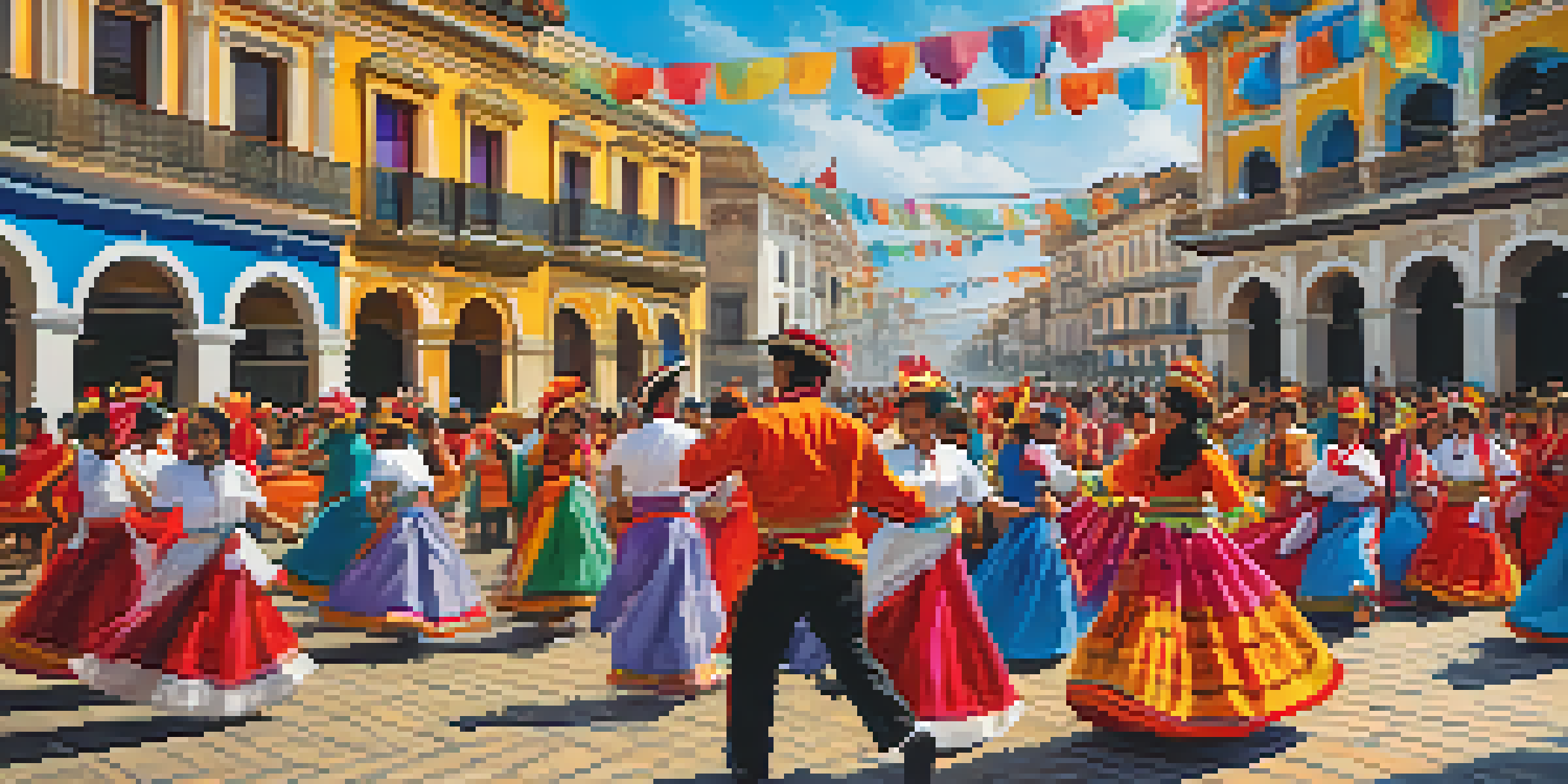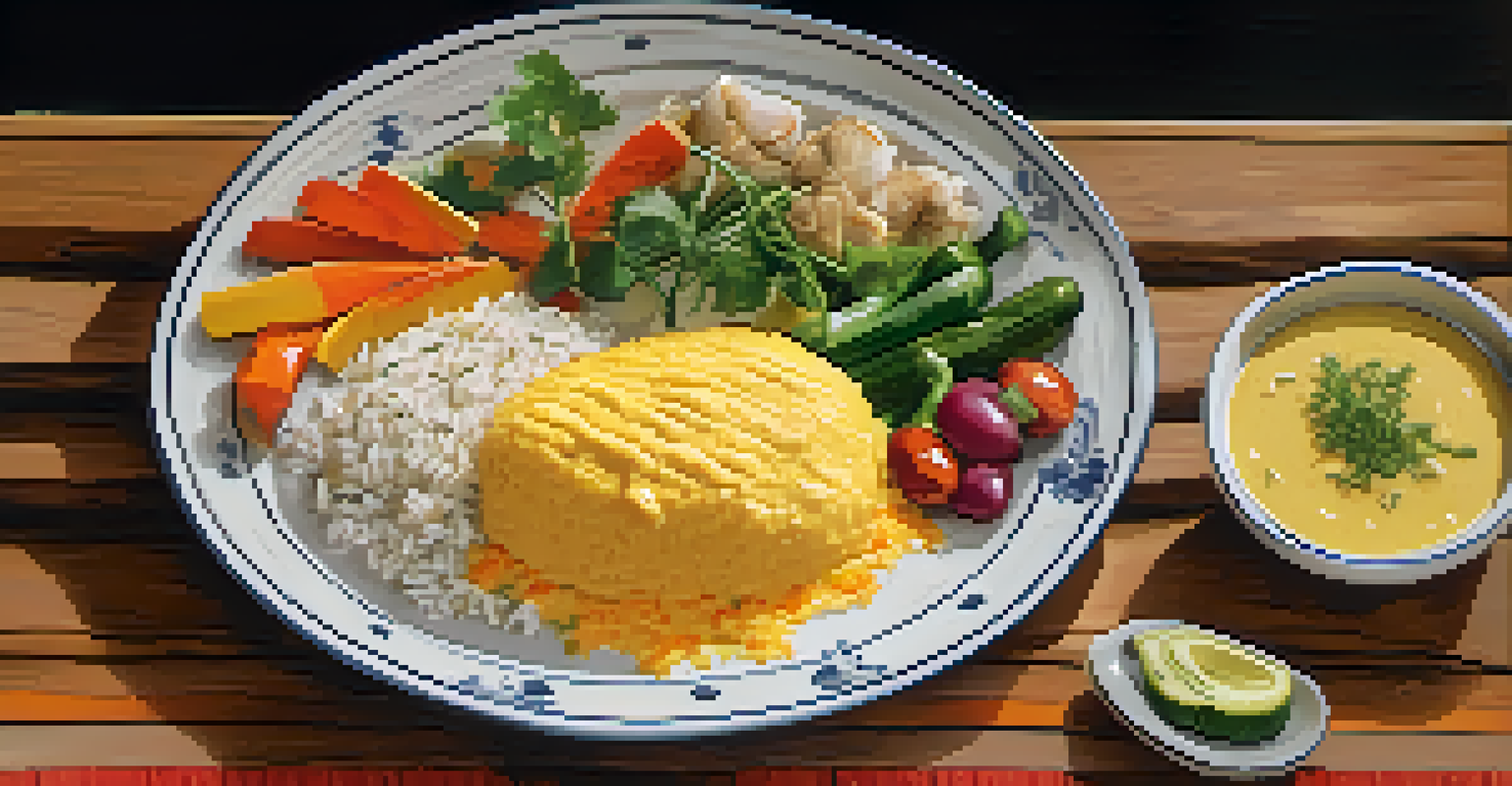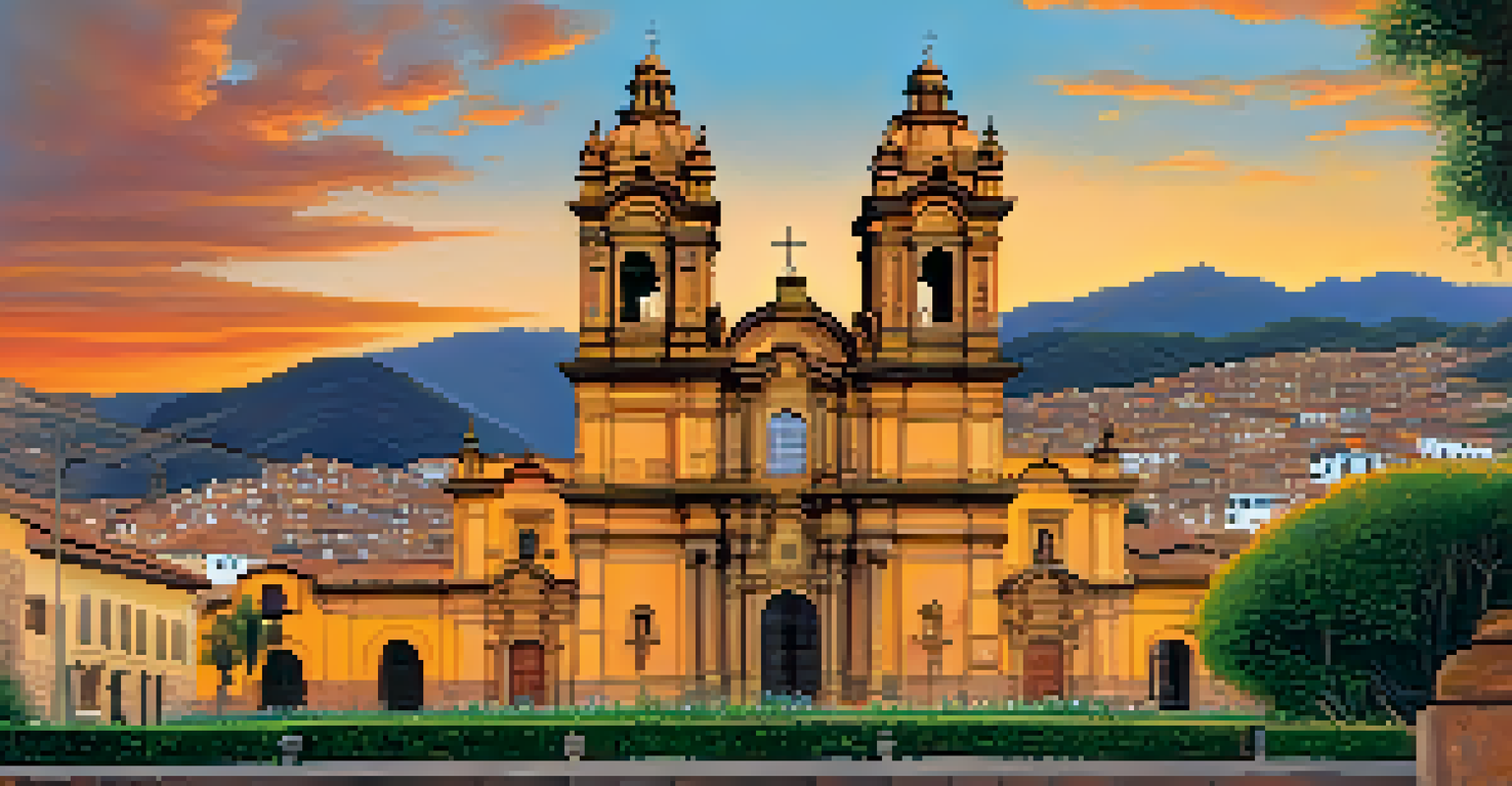The Influence of Spanish Colonization on Peruvian Culture

Historical Context of Spanish Colonization in Peru
Spanish colonization of Peru began in the early 16th century, led by Francisco Pizarro. This period marked the fall of the Inca Empire, as Spanish conquistadors sought wealth and land. Understanding this historical backdrop is essential to grasp how deeply the influence of Spanish rule permeated Peruvian society.
Cultural identities are never static, but are always evolving through the dialogue between cultures.
The colonizers imposed their language, religion, and customs on the indigenous populations. They established cities, churches, and a new social hierarchy that marginalized native cultures. This blending of Spanish and indigenous elements laid the groundwork for a unique cultural identity in Peru.
The effects of colonization are still evident today, influencing everything from architecture to festivals. By exploring this historical context, we can better appreciate the complexities of modern Peruvian culture, which emerged from this tumultuous past.
Language: The Legacy of Spanish in Peru
Spanish is the dominant language in Peru, spoken by over 80% of the population. This linguistic influence is a direct result of colonization, as Spanish became the language of administration, education, and the church. While indigenous languages like Quechua and Aymara persist, Spanish remains the primary means of communication.

The integration of Spanish into Peruvian society has led to a rich linguistic blend. For instance, many Spanish words have been adapted to include indigenous influences, creating a distinctive Peruvian dialect. This evolution reflects the ongoing dialogue between different cultures within the country.
Cultural Fusion in Peru's Identity
Peru's modern identity is a rich blend of indigenous and Spanish influences, showcasing a vibrant cultural tapestry.
Language not only shapes communication but also identity. The prevalence of Spanish in Peru signifies the lasting impact of colonization, while the survival of indigenous languages highlights the resilience of native cultures amidst centuries of foreign influence.
Religion: A Fusion of Catholicism and Indigenous Beliefs
The Spanish introduced Catholicism to Peru, deeply influencing the spiritual landscape of the country. Churches were built, and missionaries worked to convert indigenous populations, often blending Christian practices with local traditions. This fusion created a unique religious tapestry that defines Peruvian spirituality today.
Food is our common ground, a universal experience that transcends borders and cultures.
Many Peruvian festivals showcase this blend of beliefs. For example, Inti Raymi, an ancient Incan festival honoring the sun god, has been adapted to include Catholic elements. Such celebrations reflect the coexistence of indigenous and Spanish religious practices, illustrating how cultures can merge rather than clash.
The result is a vibrant religious culture where traditional rituals coexist alongside Catholic observances. This syncretism not only enriches Peruvian culture but also serves as a reminder of its complex historical journey.
Culinary Influences: Spanish Flavors in Peruvian Cuisine
Peruvian cuisine is a delightful fusion of flavors, heavily influenced by Spanish colonization. The introduction of ingredients like rice, wheat, and various meats transformed traditional indigenous dishes. Today, dishes such as paella and aji de gallina reflect this rich culinary heritage.
Peruvian chefs have embraced this diverse culinary history, creating modern interpretations that celebrate both indigenous and Spanish flavors. The result is a gastronomic scene that is both innovative and deeply rooted in tradition. This melding of culinary practices draws food lovers from around the world.
Spanish Language Dominates Peru
Spanish is the predominant language in Peru, reflecting the lasting impact of colonization while indigenous languages persist.
Food in Peru is more than sustenance; it's a reflection of cultural identity and history. The influence of Spanish colonization on Peruvian cuisine serves as a delicious reminder of how cultures can intertwine and evolve over time.
Art and Architecture: The Spanish Influence on Peruvian Design
The architectural landscape of Peru is a testament to the influence of Spanish colonization. Colonial buildings, characterized by their ornate facades and baroque details, can be seen in cities like Cusco and Lima. These structures often sit alongside indigenous sites, symbolizing the fusion of cultures.
Art from this period also reflects the blending of Spanish and indigenous styles. Artists incorporated European techniques while drawing inspiration from local themes and stories. This unique blend produced a distinctive artistic expression that continues to be celebrated in contemporary Peruvian art.
Visiting Peru, one can see how architecture and art narrate the country's history. The enduring legacy of Spanish influence is evident in both the beauty of its buildings and the creativity of its people.
Festivals: Celebrating a Blend of Cultures
Peruvian festivals are vibrant celebrations that showcase the rich tapestry of cultural influences in the country. Many festivals have roots in pre-colonial traditions but have been infused with Spanish elements over the centuries. Events like Semana Santa (Holy Week) exemplify this cultural blending, featuring both indigenous and Catholic customs.
These festivities often highlight a community's identity and history, bringing people together to celebrate their shared heritage. The colorful parades, traditional dances, and festive foods create a lively atmosphere that attracts both locals and tourists alike.
Religious Syncretism Shapes Spirituality
The fusion of Catholicism and indigenous beliefs creates a unique spiritual landscape, evident in festivals and rituals throughout Peru.
Through these celebrations, Peruvians honor their past while embracing their multicultural present. Festivals serve as a reminder of the resilience of indigenous traditions amid the enduring influence of Spanish colonization.
Modern Peruvian Identity: The Ongoing Influence of History
Today, Peru's identity is a complex blend of its indigenous roots and Spanish colonial history. Many Peruvians take pride in this dual heritage, recognizing it as a source of strength and richness. This identity is continuously evolving, influenced by globalization and modern societal changes.
Cultural pride is evident in the resurgence of indigenous languages, traditions, and practices. Many Peruvians are actively working to reclaim and celebrate their heritage, creating a space where both Spanish and indigenous influences coexist harmoniously.

The ongoing dialogue between these cultural elements is a testament to Peru's rich history. Understanding this dynamic helps to appreciate the vibrant culture that defines modern Peru, showcasing how the influences of the past continue to shape its future.